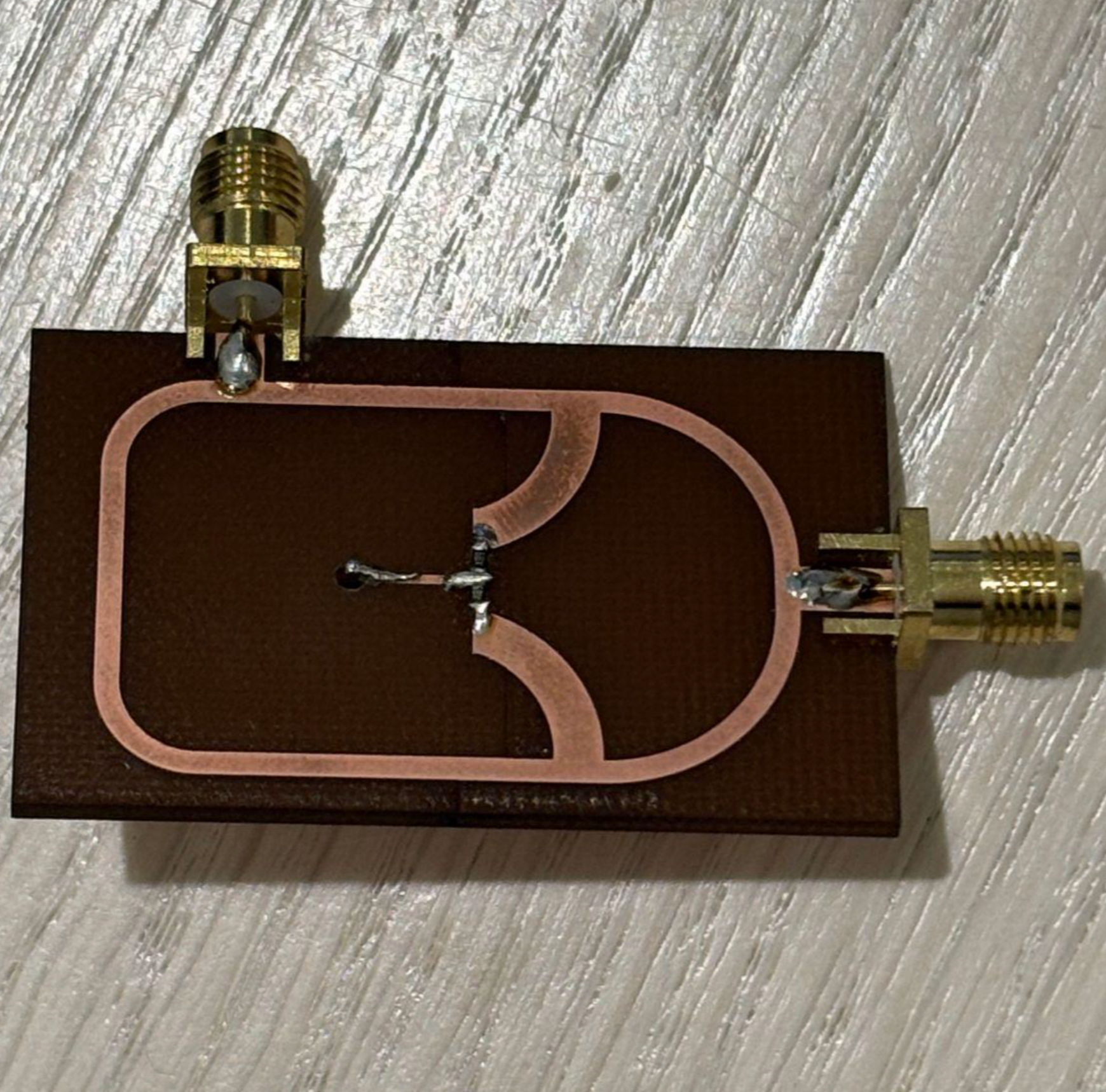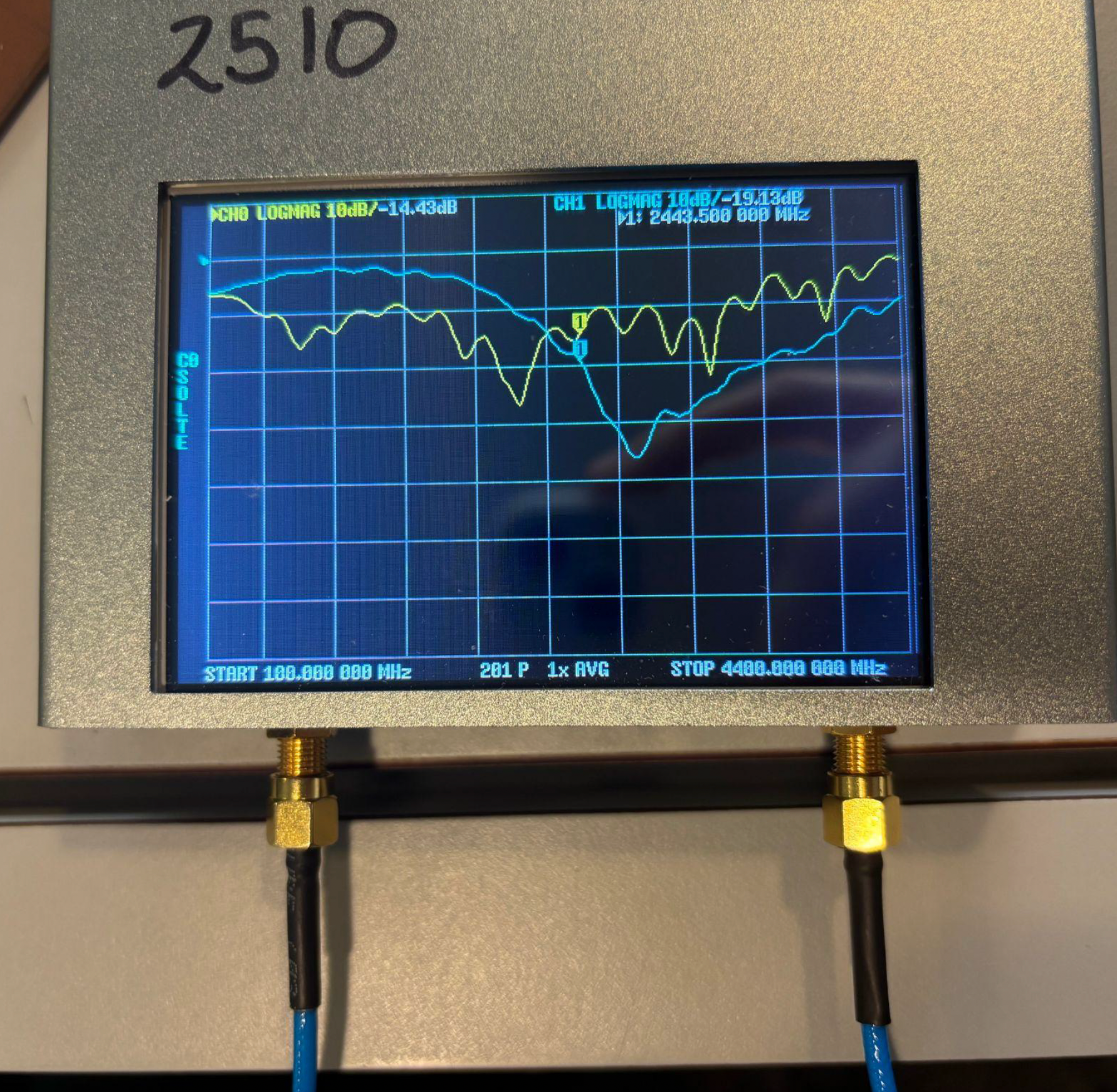Microwave Doppler Radar Speed Detector
MIT EECS | Spring 2025
Designed and built a continuous-wave Doppler radar system to measure the velocity of moving objects. Worked in a team of three, with all parts I worked on listed below. The system operated at 2.4 GHz and converted the Doppler shift into an audible tone, providing real-time feedback on speed for applications such as athletic training.
Simulation & Testing
Modeled RF components (rat-race mixer, Wilkinson splitter, low-pass filters) in QUCS Studio to validate frequency response and impedance matching prior to fabrication.
Performed individual component verification with a NanoVNA to ensure expected S-parameters before integrating the system.
Conducted system-level tests with controlled setups: a foil-wrapped box fan for initial validation and live softball throws for performance benchmarking.
Compared measured Doppler tones to theoretical predictions and commercial Pocket Radar outputs to confirm system accuracy.
System & Implementation
Architecture: Wi-Fi Yagi transmit/receive antennas → Wilkinson power splitter → rat-race mixer → low-pass filter → phono preamp → speaker.
Design & Fabrication: Simulated mixer and filters in QUCS Studio, fabricated PCBs on FR4 using an LPKF laser cutter, and verified components with a NanoVNA.
Signal Processing: A low-pass filter decoupled the Doppler-shifted signal from the 2.4 GHz carrier, isolating motion-induced frequencies for audible output.
Results
Detected softball throws between 6–19 m/s, producing tones in the 100–300 Hz range.
Live demo confirmed proportional frequency shifts with velocity, validated against commercial radar readings.
Demonstrated proof-of-concept for accessible audio-based velocity feedback in athletic training contexts.
Technical Skills
RF Design: Continuous-wave radar, Doppler shift detection, impedance matching
Simulation & Analysis: QUCS Studio circuit modeling, Doppler calculations, VNA measurements
Fabrication & Prototyping: PCB design on FR4, SMA soldering, coaxial integration
Audio Processing: Low-pass filtering, phono preamp design, tone generation
Lab Equipment: Yagi antennas, Wilkinson splitters, rat-race mixers, spectrum analyzers







